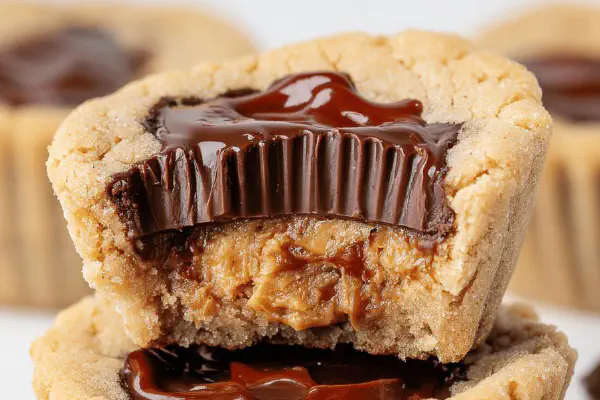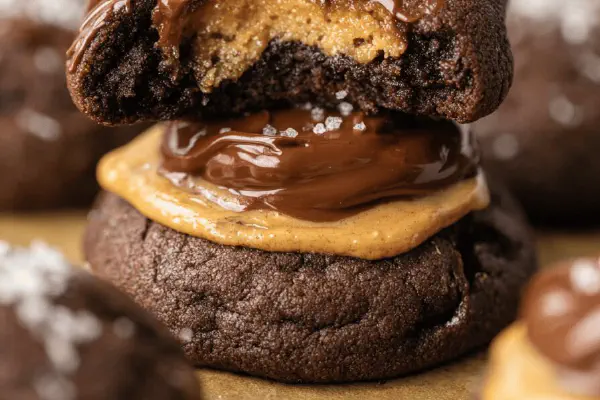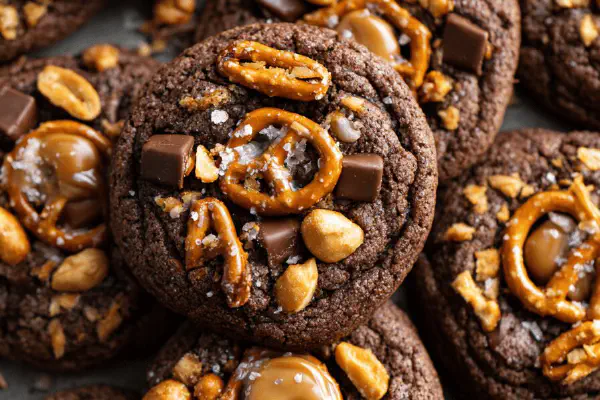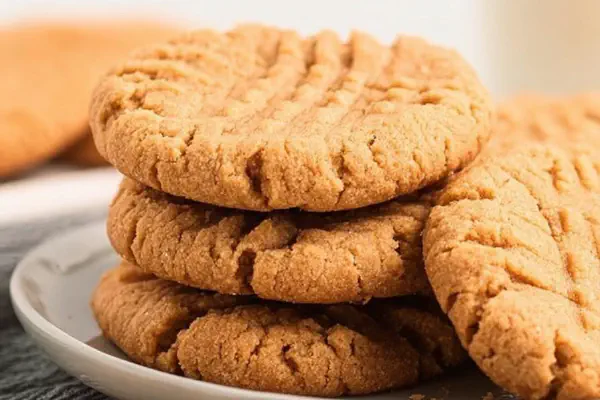Peanut Butter Cocoa Sandwiches
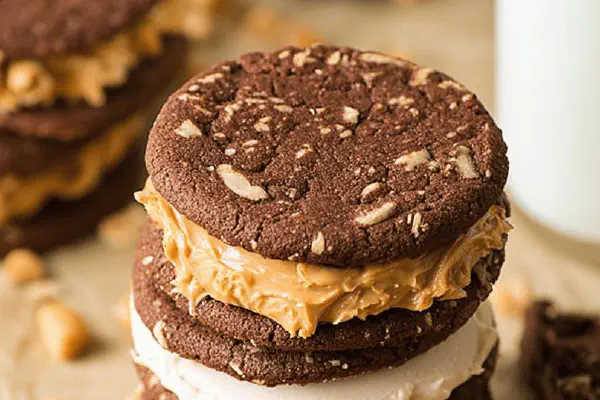
By Emma
Certified Culinary Professional
Ingredients
- 1 cup plus 2 tablespoons all-purpose flour
- 3/4 cup unsweetened cocoa powder
- 1 teaspoon baking soda
- 1/4 teaspoon salt
- 1/2 cup unsalted butter softened
- 2/3 cup granulated sugar
- 1/4 cup maple sugar (sub for light brown sugar)
- 1 large egg
- 1/2 teaspoon vanilla extract
- 1 cup peanut butter chips
- 6 tablespoons unsalted butter softened
- 1/2 cup creamy peanut butter (or almond butter)
- 2 cups powdered sugar
- 1 tablespoon whole milk (adjust as needed)
- 1/2 teaspoon vanilla extract
About the ingredients
Method
- Combine flour, cocoa powder, baking soda, salt in bowl; sift or whisk to ensure no lumps. Critical for even rise and texture. Set aside.
- Beat the softened butter with granulated and maple sugars till fluffy, about 3 minutes. Don't rush here—air incorporation is key. Scrape sides frequently.
- Add egg, vanilla. Beat till fully incorporated, glossy surface forms. Important for moisture binding.
- Slowly add dry mix to wet in batches. Mix low speed or fold, just until no streaks. Overmix tough, dense cookies.
- Fold peanut butter chips by hand. Electric mixer crushes chips, releasing oils that can alter dough texture drastically.
- Divide dough into two equal parts. Shape each into a 1.5 inch thick log. Wrap tightly in plastic wrap; fridge for 75 minutes minimum. This firms dough, makes slicing cleaner.
- Preheat oven to 355°F (slightly higher than usual for faster set). Remove dough, slice into 1/2 inch medallions. Place onto parchment lined sheet, spaced well.
- Bake about 9-12 minutes. Watch edges, look for slight crackling surface but dough still a bit soft in center. Resist urge to overbake—a firm touch when cool is what you want.
- Let sit on tray five minutes, then transfer to wire rack. Cookies continue to firm as they cool but remain soft inside. Handling early risks breakage.
- Frosting now: beat 6 tablespoons butter till pale fluffy—about 4 minutes. This aeration lightens the heavy peanut butter to come.
- Add peanut butter, blend fully. Texture thick, creamy but not loose.
- Add powdered sugar gradually. Texture will stiffen, grainy at first. Scrape bowl often.
- Stir in milk and vanilla. Beat till mixture becomes spreadable but not runny. Adjust milk sparingly; too much and sandwiches flop.
- Spread generous tablespoons on cookie bottoms, sandwich with tops. Press gently to spread, avoid frosting squeezing out.
- Stack sandwiches on parchment; chill briefly if frosting too soft before serving.
- Store airtight. Room temperature ok for a day; refrigerate longer to avoid melting peanut butter chips and frosting softness. Bring back to room temp before eating for best mouthfeel.
Cooking tips
Chef's notes
- 💡 Dry mix first; sift cocoa powder with flour and baking soda. Avoid lumps or uneven rising. Gives even color and crumb. Watch clumps sneaking in. Folding peanut butter chips carefully keeps texture intact; broken chips leak oils ruining dough structure, and cause greasy spots when baked. Use hands, gentle strokes only, avoid electric mixer at this step.
- 💡 Butter and sugars whipped well until pale, fluffy ribbons form. Air bubbles hold rise. Rushing here means flat cookies; scraping sides during beat keeps mix uniform. Egg and vanilla added mid-beat for moisture binding; glaze forms on surface, indicates ready stage. Careful mixing dry into wet in batches preserves fluff. Overmixing makes dense tough cookies; fold slow then stop.
- 💡 Chill dough at least 75 minutes tightly wrapped, soft means messy slices and chips melting during bake. Logs shape uniform thickness; slice half inch thick discs. Bake at 355°F for quick set edges but still soft centers, sensing slight crackles and jiggle. Overbake leads to crumbly tough textures, so watch closely. Rest on tray before cooling on wire rack for texture to settle.
- 💡 Frosting set by beating butter first, light and pale. Blend peanut butter fully, thick but spreadable. Powdered sugar added gradually controls stiffness; scraping often avoids grainy pockets. Milk and vanilla trick to thin frosting just right—too much milk equals runny mess, too little means crackly dryness. Spread between cooled cookies, sandwich gently to avoid squeeze out, chill briefly if too soft.
- 💡 Substitutions: Maple sugar adds caramel depth with less moisture, good in drier climates. For allergies, almond or sunflower butter switch flavor and texture; coconut oil works for dairy free but expect softer dough and different bake results. Avoid chopped peanut butter cups, melting distorts dough. Milk can be plant-based with neutral flavor, vanilla extract best real, imitation dulls impact. Storage at room temp short term okay; fridge for longer but warm to soften before serving.
Common questions
Why fold chips by hand?
Electric mixers crush chips, oils leak. Dough texture changes—greasy, softer spots. Chips should hold shape, keep biting contrast. Hand folding means gentle, preserves integrity better. Quick but important step here.
Can I use brown sugar instead of maple?
Brown sugar adds moisture, sweetness differs. Maple sugar gives deeper caramel notes without sogginess. If using brown, reduce wet slightly. Flavor changes, texture might shift. Both work but tweak chilling time maybe.
My cookies spread too much, why?
Probably dough too warm. Soft dough flattens. Chill longer. Butter too soft or overmixed batter can cause spread. Also check flour measure—slightly more flour stabilizes structure. Oven temp matters—too low means sluggish rise and spread out dough.
How to store cookies and keep chips intact?
Airtight container best. Room temp okay up to a day but chips and frosting soften fast. For longer storage, refrigerate to prevent melting. Before eating, bring back to room temp for best texture. Avoid freezing frosting sandwiches, can get crumbly after thaw.
